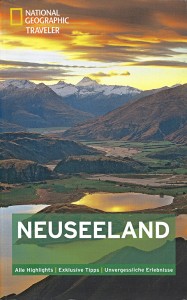
I had a gift book voucher left over from some celebration or other, and as the shop was closing its branch in town I thought I would redeem it before it went into recycling. Had a look at the maps first, because the pair that I have adorning the living room wall are gradually fading away. Not much more than a street map of Wellington was available so I had a look at the tour guides instead, hoping to find something that might give me a few tips that I had not seen before. The National Geographic volume looked like the sort of thing that I wouldn’t have bought without the voucher anyway, and it looked quite impressive, so I settled for it.
Simple fact-checking revealed, however, what an extended work of copy, paste, slap and cut it truly was. There was a fly in the ointment in the duty-free allowances (which stated that you were allowed 1.125 L of liquor, and not 3.375 L which is the current allowance). At least you can buy your duty-free allowance on arrival if you’ve shopped short (a detail not mentioned in the text). But it was the very next sentence which took my breath away:
“Customs officials strictly enforce these regulations which are intended to protect the local agricultural and food industries from introduced epidemics and diseases.”
What on earth has the amount of booze and smokes you are allowed to smuggle in have to do with introduced diseases? Advanced bovine alcoholism? Kiwi lung cancer? I will admit that the German word that I am translating as “these” in this passage is much less coercive than the English equivalent, but apparently one or two sentences about biosecurity fell victim to an editor’s red pen, and even then what’s left doesn’t make all too much sense. Biosecurity is about introduced organisms which may cause disease, or more likely disrupt what’s left of New Zealand’s ecology. It would have been clearer if travellers had been advised to simply declare all animal and plant products they have with them—most of them will be let through anyway.
On the lookout for further accommodation options, I saw that BBH was mentioned, along with the much smaller VIP Backpackers. But then again a single sentence shone through with breathtaking inanity:
“Many hostels are even equipped with good double rooms, for example, for older couples.”
Why do the younger couples get the bad rooms? Or the dorms? Or are they too loud? Or what? All I can presume is that some tour guide wisdom got handed down without anyone turning a brain on in between.
On insurance—especially car insurance—the guide remains silent about what is a major problem in New Zealand, that third-party insurance is not compulsory unlike the rest of the civilised world, and that is a real issue which has to be made clear especially to tourists.
In general the advice is haphazardly thrown together, and poor editing only contributes the occasional piece of involuntary humour. The real problem with accommodation is that, although there are competing chains in some sectors (e.g. there are several motorcamp groups), as a tourist, you will have to decide on being faithful to one group, buying their discount card and making the most of it in the limited time that you have at your disposal. Case in point is the backpackers: VIP is such a small organisation, that you would have to plan your itinerary very carefully, if you chose to stay exclusively with them. They may have better rooms and offer more service, but if you trying to get value out of the discount card, the coverage is just not sufficient.
Hotels, restaurants, and leisure activities are “priced” with a variable number of dollar signs to indicate their expense, but often the scale is random and arbitrarily different for the different categories. As for restaurants very little indication is given as to what was eaten, and whether more than one visit was undertaken, and then there is some lukewarm wisdom thrown in like:
“Wonderful culinary experiences can be had, but it may also be the case that restaurants offer similar dishes at high prices without regard to quality – often lamb/beef/venison or fish with mashed kumara. Top chefs are only found in holiday resorts. They [presumably the chefs] come and go.”
Yeah, right.
I’ve decided therefore to treat you to my own tourist advice on language, politics, and society, as well as on all of the above, but be warned: I’ll give you names and addresses, prices as they were on the day for one adult. The food will be pizza, fish’n’chips, fried rice, hamburgers, pies, sausage rolls, a roast every now and then, and lamb shanks for celebrations. Hostels will be double room as single, and I’ll try to list the amenities and whether it was survivable. Leisure activities likewise.
Just don’t come back at me ten years down the line and complain that the prices have gone up, the place has closed down or the establishment has changed hands. No.
